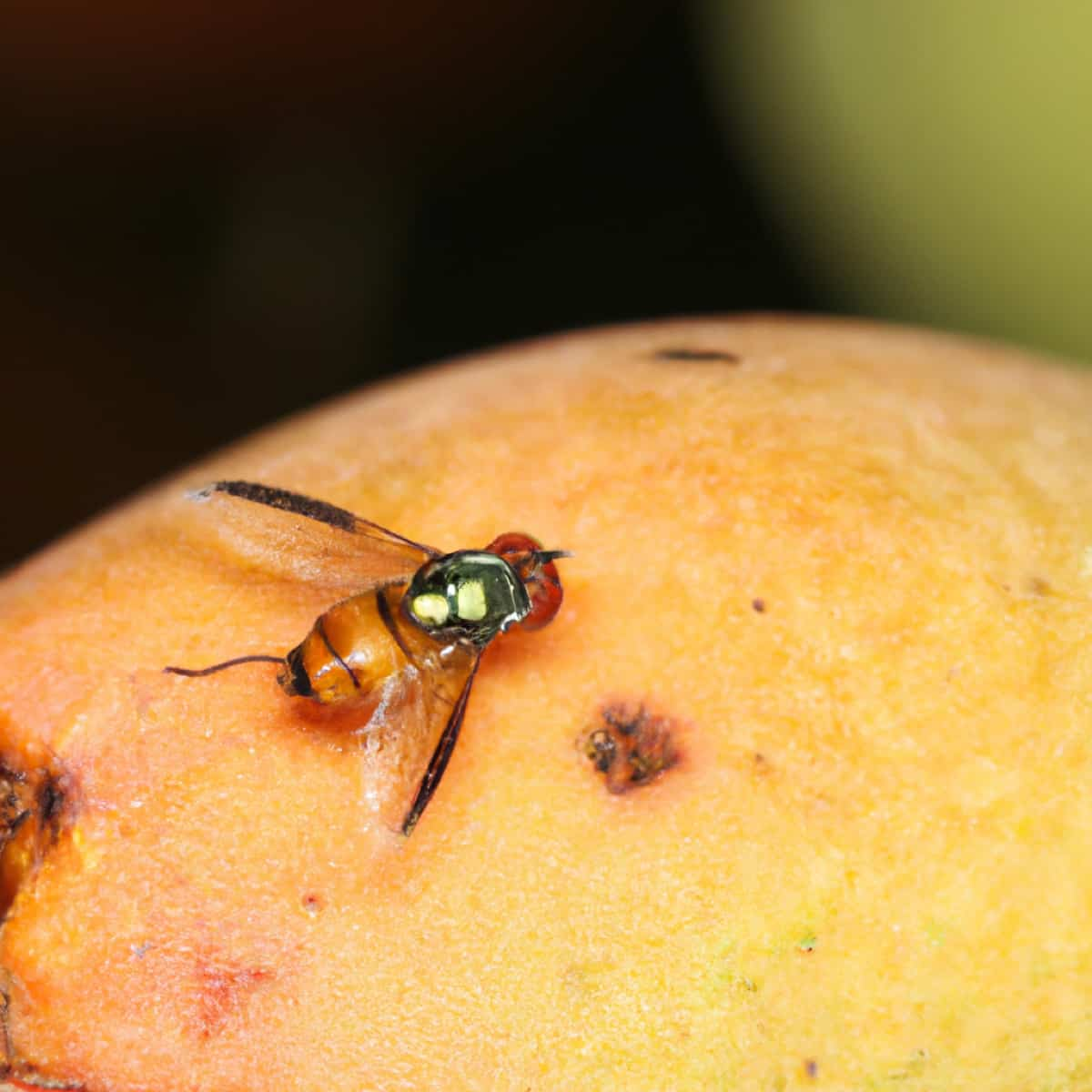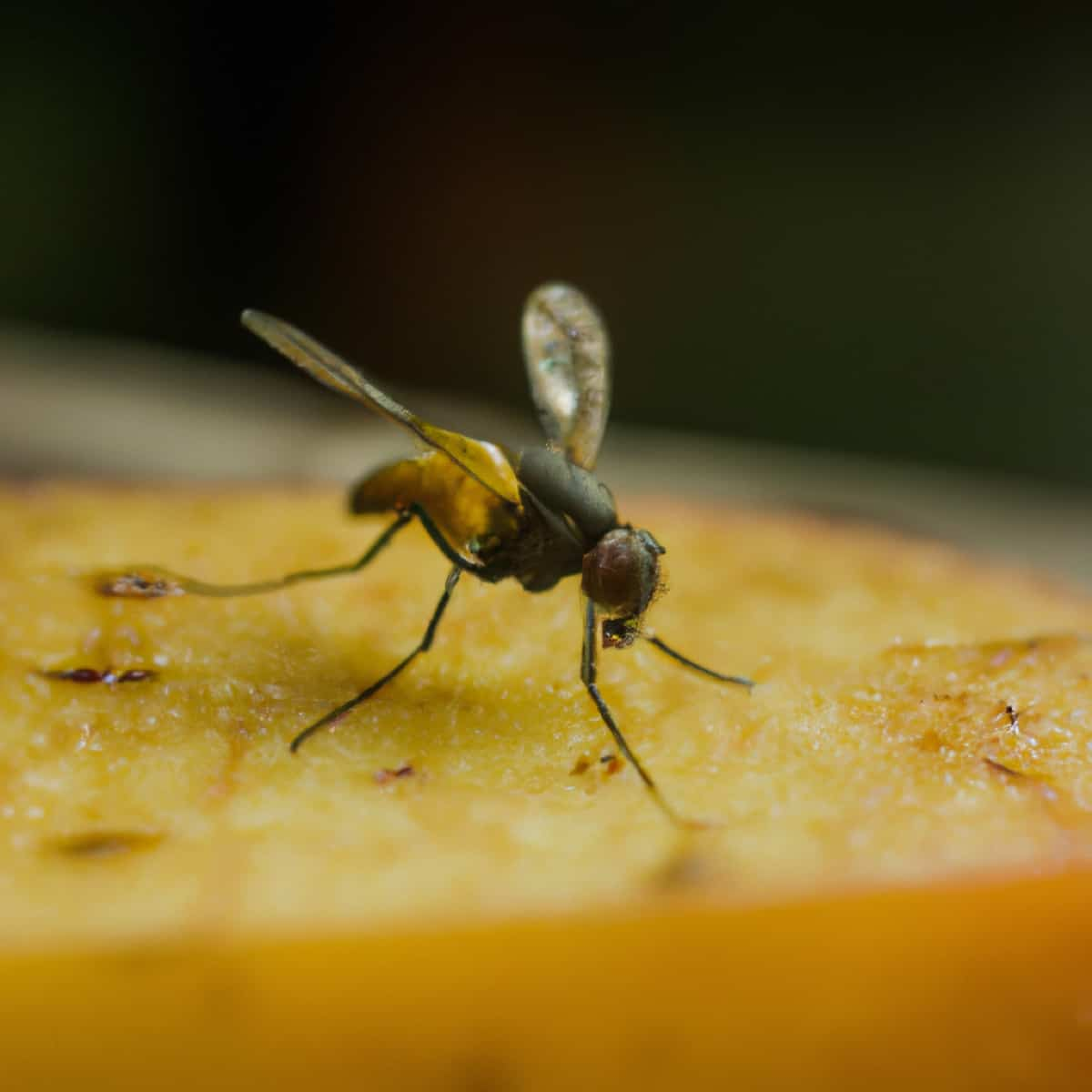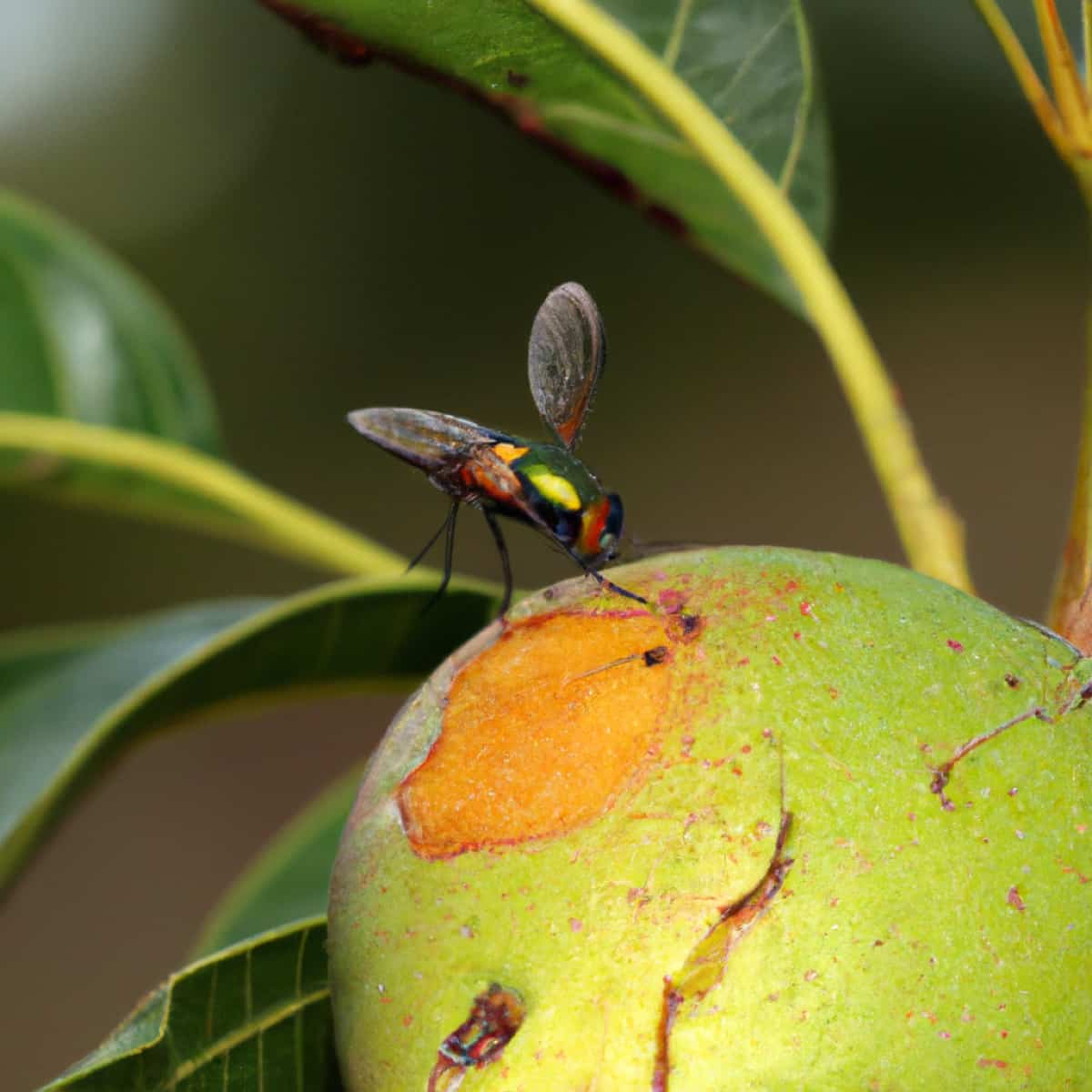The Mango Fruit Fly, Bactrocera dorsalis, belonging to the Family Tephritidae of the Order Diptera, is native to South-east Asia. It is a major concern because it can impair the quality of the fruit by leaving behind many small, soft, and often unmarketable fruits. In addition, the pest is also a vector for several other diseases, including mango malformation disease, mango wilt disease, and mango leaf curl disease.

To effectively manage this pest, it is important to understand its life cycle, its preferred habitats, and the best methods for controlling it. This article will provide an overview and discussion of the Mango Fruit Fly Pest in Mango crops, including its symptoms, identification techniques, and control.
Mango Fruit Fly Pest Management
Life Cycle of Mango Fruit Fly Pest in Mango Crop
The life cycle of the mango fruit fly pest has four stages. They are egg, maggot, pupa, and adult. The life cycle of the mango fruit fly pest in mango crops typically begins when adults lay their eggs just beneath the skin of mango fruits. The eggs hatch into maggots within two days. They feed on the fruits and damage their pulp and skin. The maggots then undergo three instars within two weeks before pupating.
The maggots mature in the cocoon and pupate inside the soil, and adults emerge from it in around 10-12 days in April. The female adults mate after developing completely and start laying eggs inside the fruits within eight days from emergence, and the population reaches its peak in May-July. The cycle then starts all over again.
Occurrence of Mango Fruit Fly Pest in Mango Crop
- Location of Mango Fruit Fly pest: This pest infests mango crops in India, Africa, Mexico, the United States, Brazil, Bangladesh, Sri Lanka, Thailand, Malaysia, the Philippines, Australia, China, South-East Asia, Indonesia, and Taiwan.
- Host range: The pest is a polyphagous feeder; it primarily infests mango crops and also feeds on other crops such as banana, guava, cashew, citrus, papaya, passion fruit, peach, apricot, pear, ber, cherry, avocado, strawberry, jackfruit, melons, and coffee.
Factors Favoring the Population Increase of Mango Fruit Fly Pest in Mango Crop
- The warm climate of the tropics is ideal for the mango fruit fly to thrive. The hot and humid conditions facilitate the rapid growth of the larvae.
- Large amounts of organic matter in the soil provide an ideal breeding ground for the mango fruit fly. The decaying organic matter provides a rich source of nutrition for the larvae, allowing them to grow quickly.
- The large number of mature fruits in the crop makes it ideal for the female flies to lay their eggs in.
- Lack of predators allows the mango fruit fly to multiply and cause significant damage to the crop.
- Using chemical insecticides can kill the natural predators of the mango fruit fly, allowing the pest to thrive in the absence of its predators.
Identification of Mango Fruit Fly Pest in Mango Crop
- Eggs: The eggs are white, about 1mm in diameter, elliptical, and laid in clusters.
- Larva: The larvae are small and white, have a distinct head and thorax, and are legless.
- Adults: The adult Mango Fruit fly Pest is about 6-10 mm long and yellowish-brown. It has a distinct white spot on the thorax, four black spots on its transparent wings, and yellow legs.
In case you missed it: Mango Nut Weevil Pest Management: Symptoms, Treatment, Chemical, Biological, Natural, and Organic Control

Damage Symptoms of Mango Fruit Fly Pest in Mango Crop
- The female lays the eggs just beneath the skin of the mature fruits by puncturing them in mesocarp and exhibiting decayed spots.
- Brownish rotten patches are also observed on the epicarp of the fruit.
- The maggots feed on the pulp of the fruits and convert them into odor-producing semi-liquid that is inedible, making them unmarketable.
- This results in premature fruit drop, and the fluid oozes out from the fruit.
Percentage of Yield Loss in Mango due to Mango Fruit Fly Pest
- In India, the percentage of yield loss due to mango fruit fly pests is about 40%. In the United States, the losses range between 10-15%. In Africa, it is between 20-40%. In Mexico, it ranges from 10-20%.
- The Economic Threshold Level (ETL) for the mango fruit fly pest is set at 1-2 fruit flies for every 10-20 mango fruits.
Cultural Control of Mango Fruit Fly Pest in Mango Crop
- Practice pruning operations and remove old, dead, and diseased branches to reduce the pest’s intensity.
- Practice crop sanitation by collecting and disposing of the dropped-infested fruits in a pit.
- Practice summer ploughing to expose the soil-borne pupae and destroy them.
Biological Control of Mango Fruit Fly Pest in Mango Crop
- Predators, such as birds like starlings, shrikes, and kites, can help reduce the pest population by preying on the fruit flies.
- Natural enemies like tachinid flies and braconid wasps can be introduced into the crop in large numbers, and they will seek out the mango fruit fly larvae on the trees and parasitize them.
Chemical Control of Mango Fruit Fly Pest in Mango Crop
- Use bait sprays with the composition of malathion or fenthion or carbaryl or dimethoate insecticides, along with jaggery or molasses, to kill the adults.
- Foliar sprays of neem oil are an effective insecticide that has a repellent action against the mango fruit fly when applied on the leaves and around the base of the tree.
Preventive Measures for Control of Mango Fruit Fly Pest in Mango Crop
- Planting varieties of mangoes that are naturally resistant to mango fruit fly pests can significantly reduce the risk of infestation.
- Regular crop monitoring is essential to identify any signs of pest infestation. The crop should be visually inspected regularly to detect any signs of the mango fruit fly.
- Apply any insect growth regulator to disrupt the development of the mango fruit fly. These products prevent the larvae from reaching adulthood, preventing them from reproducing.
In case you missed it: Mango Stem Borer Pest Management: Symptoms, Treatment, Chemical, Biological, Natural, and Organic Control

Conclusion
The mango fruit fly is a major pest of mango crops and can cause serious damage to the fruit. However, it can be effectively managed with proper monitoring, integrated pest management strategies, and good sanitation practices. These strategies can help reduce the damage caused by mango fruit flies and improve the yield and quality of the mango crop.
- Beneficial Insects in Pest Management
- Natural Solutions for Pest Control in Flower Gardens
- Types of Fungicides Used in Agriculture
- Common Issues in the Fruit Development Stage of Pomegranate Farming
- Fruit Development Issues in Papaya: Easy Solutions and Treatment
- Soil-Borne Diseases and How to Protect Your Plants
- Practices to Prevent Disease Spread in the Garden
- From Wilted to Thriving: How to Treat Root Rot Naturally in Houseplants
- Natural Remedies to Cure Brown Spots on Fig Tree Leaves